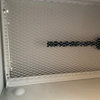The SEER Application Quandary - udarrell
SEER EER Compressor BTUH and Sizing High SEER Equipment
Perhaps it is time for a little introspective analysis of EER ratings compared to SEER Ratings and compressor BTUH output as related to the condenser evaporator BTUH ratings to, sizing, and equipment to the actual manual J heat load.
Applying the rules of logic in respect to the requirements of a particular application the compressor BTU per hour should be an important consideration, along with the humidity or latent heat load requirements.
Due to the smaller compressor and thus higher suction pressures and evaporator temperatures, it would appear to me that the equipment would need to be sized in some respects to the compressor's BTU per hour and not solely on the ratings of the condenser and evaporator combinations.
If my memory serves me correctly, around 35 years ago at 2 tons a condenser would have a 26,000 to 28,000 BTU per hour compressor. Today the compressor's BTU per hour rating is considerably lower than the condenser and evaporator combination.
Therefore, and heavy load BTU per hour applications I would tend to go a half a ton to a ton higher on the BTU per hour of the condensing and evaporator combinations.
Consider the criteria being used for the SEER formulas as compared the the EER formula.
Remember, the SEER of a system is determined by multiplying the steady state energy efficiency ratio (EER) measured at conditions of "only 82F outdoor temperature," 80°F dB and 67°F wB indoor entering air temperature by the Part Load Factor (PLF) of the system. (The PLF is supplied by the government.)
Air conditioner EER ratings, and BTUH Tons of Cooling Capacity ratings on Air Conditioning units "are/were rated at an outdoor temperature of 95°F," and an indoor 80ºF dB 67ºF WB or, a 50% Relative Humidity. Always ask to see the EER Ratings of the equipment you are buying, they will be will vary as too how much lower they are.
How would their EER & SEER Ratings compare at 100 to 115-F outdoor temperatures?
Since I am retired, I am interested in what those working in the field are doing in respect to sizing high Seer new equipment. It has been evident from many posts I have viewed and e-mails I have received, that some of the new high Seer systems have a problem keeping up in real hot heavy load conditions with the older six to eight SEER counterpart tonnages with the larger capacity compressors.
I firmly believe that the government should have left the 10-Seer equipment alone & allowed the contractors & consumers to determine what SEER equipment would be better for a particular application's conditions, the consumerÂs budget & Payback preferences. udarrell _ 2007








jeffnette
jdb52
Related Professionals
Carson Solar Energy Systems · Cerritos Solar Energy Systems · North Tustin Solar Energy Systems · Melville Solar Energy Systems · Jollyville Home Automation & Home Media · Lenexa Home Automation & Home Media · Milton Home Automation & Home Media · Minnetonka Home Automation & Home Media · Palo Alto Home Automation & Home Media · Pine Hills Home Automation & Home Media · Sun Lakes Home Automation & Home Media · Winchester Home Automation & Home Media · Canton Fireplaces · Channelview Fireplaces · Crestwood Fireplacesgaryg
udarrell_2007Original Author
jdb52
garyg
udarrell_2007Original Author
Oron
heartin